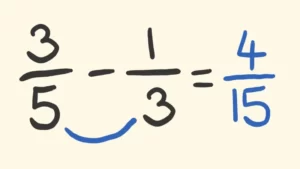When learning the tut language, it can be difficult and frustrating, especially if you don’t know where to begin or what to do next. But this doesn’t have to be the case; if you simply follow these guidelines, you can quickly pick up the Tut language. By the time you finish reading this guide, you’ll know everything you need to know about learning Tut language independently, including advice on where to start and useful resources to help you along the way.
Table of Contents
Is There a Language Called Tut?
Yes, there is a language called Tut which is used for communication among the enslaved people. When secret languages weren’t used and people couldn’t read or write, this language served as a fitting sanctuary that allowed people to communicate. The Tut alphabets are different from the English alphabet even though the language is similar to the English language.
However, in this language, the word that starts with the letter’s sound takes the place of each individual letter in the word. Black Americans use the language. The history of this language is covered in Gloria McIlwain’s book on the Tut language. (View Who Created The English Alphabet?)
How to Learn Tut Language?
Did you know that Africans were the ones who first introduced Tut to America? It is true, and you may already be able to speak a little of it if you have any African ancestry. For instance, there are still African French Creole dialects in some areas of southern Louisiana, and they continue to use words like massi (master) and wenchia (woman). Knowing the tut language can deepen your connection to your ancestors and your understanding of their history.
The steps below will help you get started if you’re interested in learning this ancient and distinctive form of communication. Determine where your ancestors originally came from to get a better idea of which dialects might be the most useful for your needs.
Asking others who may be family members who have looked into their own family trees’ ancestry is the best way to go about doing this. Second, start small by focusing on just one word at a time. Add “maw” to your list of vocabulary words if someone tells you that the word “maw” means “mother” in an ancient Southern Tut language that is still spoken by former slaves from Sierra Leone or the Gambia.
Try speaking sentences after getting used to speaking a few words. To do this, write down all the possible combinations of those individual words so that you can look up which ones make sense together. Repeat the phrases until you feel comfortable speaking short sentences out loud. They become automatic! When the tut language is presented in such digestible chunks, you’ll quickly see how simple it is to learn.

Rules and Learning Tips
To use Tut effectively, you must first comprehend how it functions and how to communicate with others. Here’s where rules come in handy; in order to be considered fluent in Tut, you must be aware of the right ways to interact with others. While learning the tut language may initially seem difficult, there are some straightforward guidelines you can adhere to that will make learning much more manageable. For example, use a variety of resources for finding out about tut language and practice as often as possible.
You can learn tut using the plethora of online tutorials, videos, and flashcards that are available. The best way to get started is to watch or listen to dialogues that have been recorded so that you can hear how people sound when speaking Tut. Making sure you pronounce the words correctly is also important because if someone doesn’t know how to spell a word, they won’t know what you’re saying. If you’re having trouble understanding a word or phrase, ask a person who speaks Tut for assistance or look it up in your tutor!
- All words must be uttered in the proper tonality according to Tut’s first rule. The secret language uses four tones: rising, falling, low, and high. Depending on the tone used, each word can have a different meaning. For example, the word “dog” is spoken with a high tone, while the word “cat” is spoken with a low tone.
- The second rule of Tut states that the proper intonation must be used when speaking all words. The rise and fall of the speaker’s voice during a sentence is known as intonation. There are two primary intonation patterns in Tut: rising and falling. For yes-or-no questions, rising intonation is used, whereas falling intonation is used for statements.
- All words must be spoken with the appropriate stress, according to Tut’s third rule. When a speaker emphasizes certain vocalic syllables in a word, they are using stress. The first syllable of a word is always stressed in Tut. For example, the word “dog” is stressed on the first syllable, while the word “cat” is stressed on the second syllable.
- In Tut, pronunciation is crucial. To be understood, all of the vowels must be pronounced correctly. Although it can be challenging for those who speak other languages, this is a fundamental part of the Tut language. The Tut language is tonal, which means that in order to convey meaning, voice pitch is essential. There are three tones in the Tut language: high, low, and falling.
- In the Tut language, spaces between words are never taken into account. In other words, there are no spaces required between words when they are used together. Although this might seem like an odd way to communicate, there are several advantages.
What Are the Benefits of Using Tut Language?
The benefits of using Tut language are:
- It is simple to find resources for language learners.
- Learners can make and follow their own study schedules.
- It is beneficial to practice both speaking and writing.
- It facilitates passing along hidden messages.
- This language helps with breathing patterns.
- Additionally, while speaking and producing alphabet sounds in words, it corrects tongue placement. Also, check out the 6 official languages of UN.
FAQs
When Was Tutnese Created?
Tut language was created in the 18th century in the As literacy was forbidden to slaves, it allowed them to communicate, read, and write by teaching them the Tut alphabets. (See The Interesting History of Alphabet)
What is Tut Language on TikTok?
On TikTok, where users share their language-learning journeys and interact with one another in the language, Tutnese or the Tut language are not visible. Regarding the language’s heritage, some people have expressed concern. People who haven’t heard of Tut have adopted it casually. The language has attracted a lot of online interest. Anciently Tut was used to communicate secret messages so to preserve the ability of Tut to communicate private information, it must not be public and definitely not on TikTok.
Summary: How to Learn Tut Language?
The TUT Language by McIlwain is the best resource for learning the TUT language. It’s difficult to find McIlwain’s book online and buy it. The University of Michigan, Allen County Public Library, University of California, Santa Barbara(UCSB) Library, San Francisco Public Library, and Stanford University Libraries are just a few of the libraries across the country where you can view the book or copies of the book.



